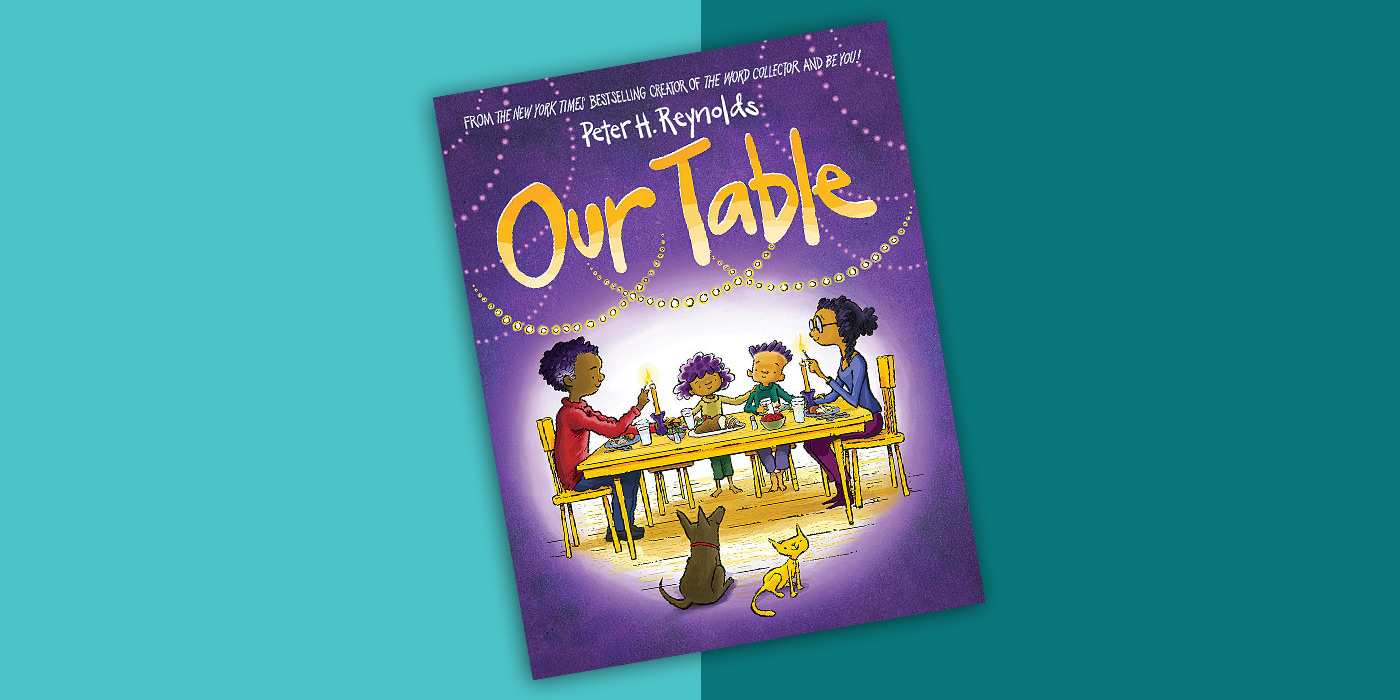Teaching gratitude to younger students is a rewarding experience. With inspiration from Our Table, read on for a list of engaging gratitude games and activities that will teach your students about self awareness and thankfulness.
Make learning fun by having your classroom participate in gratitude journaling. A gratitude journal has tremendous benefits (like feeling happier and more connected to the present moment) and is a great way to encourage children to explore their thoughts and feelings.
Share examples of what you're grateful for and inspire your classroom to do the same. Tell your students to get creative with what they write about — this could range from their favorite foods to their most-loved books.
Another fun way to get students to write is by providing daily gratitude prompts. This will help your students reflect on what brings them joy and establish a regular gratitude practice!
Active listening is an important part of relationship building. A fun and simple idea is to have your students sit in a circle and share what they are grateful for. The student to their right repeats what the first person said and adds their own statement. This gratitude game will teach kids how to pay attention to others more closely.
This gratitude circle will prompt more positive emotions in your classroom. You can even try using gratitude stones to encourage a spirit of gratitude in your classroom. Gratitude stones are a stone that students can decorate and keep in their pocket to remind them to stay positive and grateful.
Teamwork is a skill your students will use to foster positive relationships inside and outside of the classroom.
Split your students into small groups and have them bond about what they enjoy. Suggest an interactive group activity that allows students to contribute to the greater team. For example, have each student list out what they are thankful for. Next, have each group create a gratitude collage by using old magazines that visually captures what they are grateful for.
Have your students present the collage to the classroom and encourage them to point out commonalities they share. This activity will spark an attitude of gratitude in your students.
Another great gratitude exercise is creating a classroom gratitude bulletin board. Inspire your students to write a letter to each person in their classroom community that explains why they are grateful for them. Next, compile these letters in a gratitude jar and read it aloud.
You can even play a gratitude game by having students guess the top five things they are thankful for. Pin these wonderful messages on a gratitude wall. Your students will be touched by the kind words of their peers and build a habit for expressing gratitude.
Another way to motivate students to practice gratitude in the present moment is by holding a screen-free challenge. As a class, decide what is a reasonable challenge and brainstorm the guidelines. Create a log so your students can record screen-free activities they participate in.
Once the challenge is completed, have your students reflect on what they enjoyed the most. Additionally, have them think about how this affected their perception of time.
Have your students think about the various tables they sit at and what that means to them. A big table your students sit at is the classroom table. Get your students to reflect on what they appreciate about sharing that space with their peers. To take this activity a step further, provide craft materials so students can build a placemat, centerpiece, and conversation cards.
For the placemat, have each group member write down what they appreciate about each other, and if they're creating centerpieces, have each table create a set of group values they will abide by. Have them reflect on how they want to treat each other and what kind of space they want their table to be.
To create conversation cards, write down questions that will help them get to know each other better. Some examples are:
What is something you are proud of?
What is the best thing that happened to you this week?
What are your favorite hobbies?
Who is your hero?
What brings you happiness?
What is your favorite book to read?
What makes you laugh the most?
Tell your students to create a duplicate of the conversation cards and urge them to use to use this at other tables they are a part of. Follow up with your classroom a week later and ask if this activity left them feeling closer to who they were talking to.
A big component of feeling grateful is through deep and meaningful relationships. Teach gratitude by encouraging your students to prioritize their relationships and actively appreciate their loved ones.
Encourage your students to go on a thankful nature walk with their families. Tell your students to take deep breaths and notice details about their environment. Nature, like crisp air and beautiful trees, offers a lot to feel grateful for.
Next, have your students write down an aspect of their nature walk they appreciated on a paper shaped like a leaf. Gather everyone’s leaves and post it on a gratitude tree. This will serve a great reminder to spend time in nature and be thankful for everything mother nature has to offer.
Encourage your students to write down something they are thankful for about one of their peers. Then encourage the receiver of the message to pass along a similar note to someone else. This gratitude chain will have a massive impact on how your students interact with one another.
Get in the spirit of giving thanks this season by teaching gratitude to your students. Bonding activities like creating a classroom gratitude book and reading Our Table together will foster a compassionate and generous culture.
Shop books about gratitude below! You can find all books and activities at The Teacher Store.
